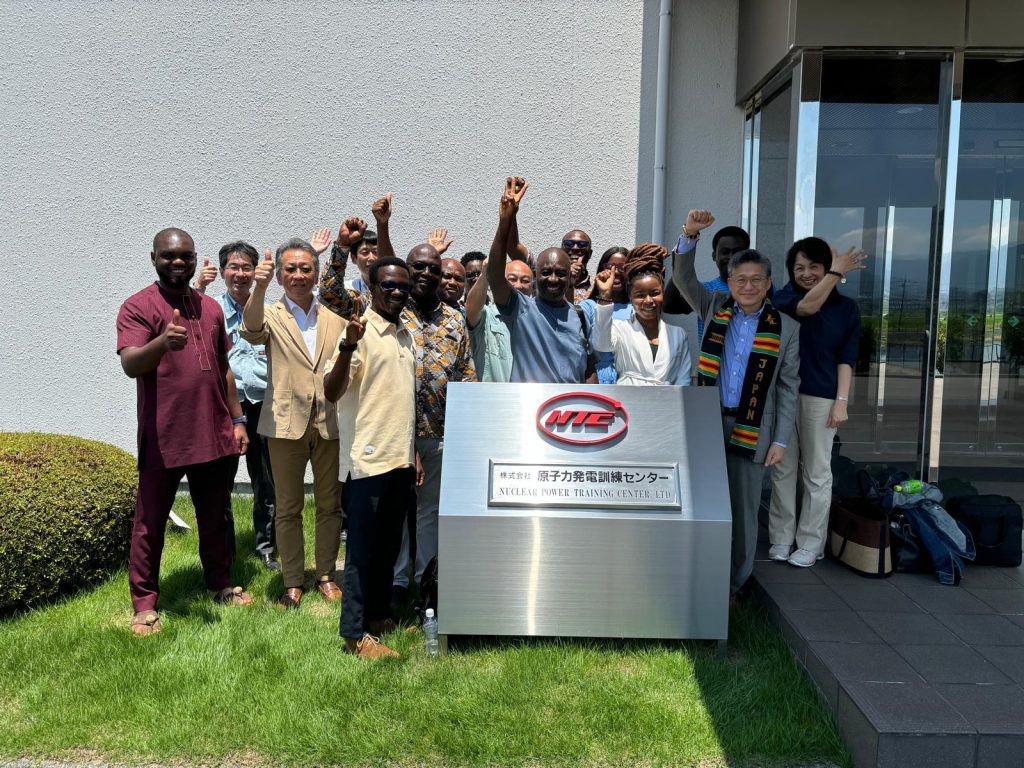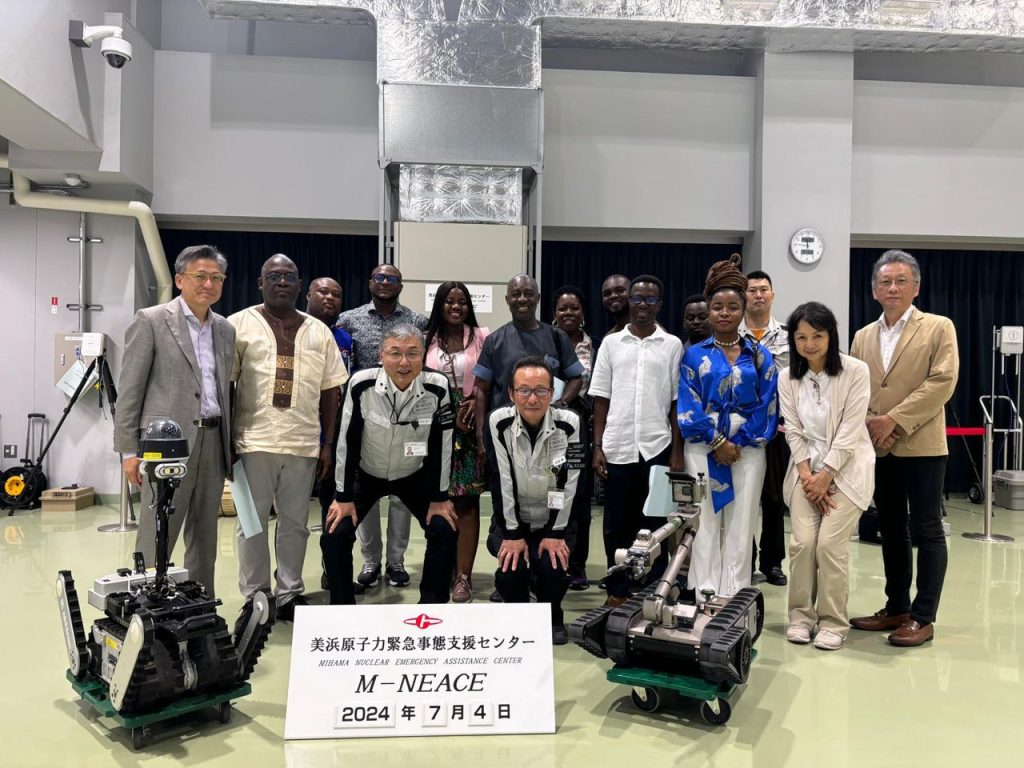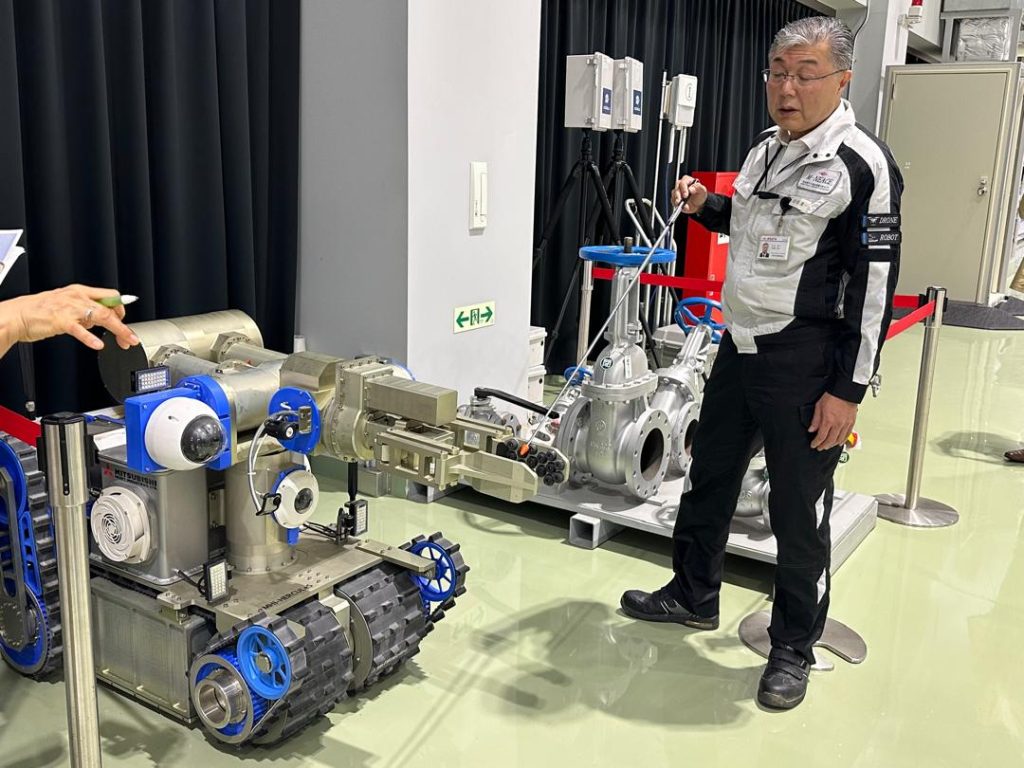By: Joyce Gyekye
With six more years for Ghana to establish its first nuclear power plant, the Nuclear Power Institute, NPI, Ghana Atomic Energy Agency, GAEC and international partners are leaving no stone unturned to expose nuclear experts , the media and other stakeholders to best practices in countries advanced in the technology.
One of such countries is Japan that had its first nuclear power plant, Tokai Power station in 1966 whilst Ghana’s Atomic Energy Commission, GAEC, was established in 1964 by the country’s first President Dr. Kwame Nkrumah. With more than 50 years experience in using nuclear energy, Japan has been assisting Ghana in its journey to establish its first nuclear energy plant in 2030. It is against this background that a ten-member team with assistance from GAEC, the International Atomic Energy Agency, IAEA and the Japan Atomic Industrial Forum, JAIF International Cooperation Center facilitated a study tour to some nuclear institutions in Japan.
The study exposed experts and the media to the benefits of the technology, security measures being put in place in Japan after the Fukushima Nuclear disaster in 2011 and precautionary measures put in place to prevent reoccurrence. This is to help Ghana to navigate the terrain as it edges close to constructing its first nuclear power plant.

The delegation, which was headed by Ernest Owusu-Afari, a Board Member of NPI, visited the Tsuruga Nuclear Power Station Unit 1, which is under-going decommissioning, the Mihama Nuclear Emergency Assistance Center, M-NEACE, the Nuclear Power Training Center, and the Fukui Atomic Information Center.
At the Tsuruga Nuclear Power Station 1, the team went through tight security and safety protocols to see the reactor and how the spent fuel; which is used nuclear fuel, is being stored. Prior to entering the chore area of the reactor, the radiation levels of team members were checked and checked again after the tour. As a safeguard measure, members were prevented from taking their phones. This attests to the IAEA’s three S in the 19 nuclear infrastructure issues, namely: nuclear safety, security and safeguards among others.

Situated at Fukui Prefecture, where most of Japan’s nuclear plants are located, the M-NEACE has positioned itself in readiness for any nuclear disaster, like the earthquake and tsunami that caused the Fukushima nuclear incident in 2011. The Centre is equipped with machines to deal with On-site and Off-site activities using robots, drones that will be remotely controlled as well as unmanned helicopters.
Impressed with the security consciousness of the Nuclear power operators and regulatory authorities in Japan, the lead of the delegation, Ernest Owusu- Afari acknowledged the apprehension and concerns of many Ghanaians about nuclear but said “the power of atom is a gift from God to humanity and should be utilized like other natural resources. Ghanaians will be shooting themselves in the foot if we don’t make the effort to utilize the technology.”
In its development, he asked that “we emulate the security consciousness of Japan. nuclear institutions and embrace the technology as it has the potential to create more jobs and promote development.” Mr. Owusu-Afari expressed the NPI Board’s support in the process leading to the construction of the reactor and was optimistic that the technology would be safely deployed as IAEA would ensure the safety protocols.
The General Manager of JICC, JAIF International Cooperation Center, Toshihiro Yamakawa who led the delegation to all the visited facilities, said Japan has revived 12 of the 54 nuclear reactors that were shutdown following the Fukushima disaster. He said currently, “nuclear energy contributes 7 percent to the country’s energy mix as against 30 percent prior to the Fukushima incident.

He added that the revived reactors have new safety and security measures installed that can withstand natural disasters like earthquakes and tsunamis as well as terrorist attack. Despite the devastation caused by the Fukushima disaster, Japan’s energy policy is to increase its nuclear power capacity to 24 in the next five years.














